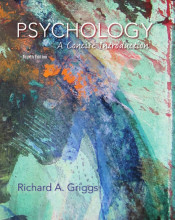Psychotic disorders (schizophrenia)
55 important questions on Psychotic disorders (schizophrenia)
How do we call a disorder characterized by disordered thinking, in which ideas are not logically related?
What is the lifetime prevalence of schizophrenia?
What are the three domains of the symptoms for schizophrenia?
negative
disorganization
- Higher grades + faster learning
- Never study anything twice
- 100% sure, 100% understanding
How do we call the proportion of a particular population found to be affected by a medical condition?
What are the dsm 5 criteria for schizophrenia?
criteria B
criteria C
What are different types of delusions?
Thought broadcasting
Grandiose delusions
Ideas of reference
Feeling controlled by external forces
What are the symptoms of criteria B for schizophrenia?
What are the symptoms of criteria C for schizphrenia
or, if during a prodromal or residual phase, negative symptoms, or two or more from symptoms 1-4.
What does the activation in Broca's and Wernicke's area in people that hear voices suggest?
How do we call beliefs contrary to reality and firmly held in spite of disconfirming evidence?
What are negative symptoms?
What are types of negative symptoms?
Asociality
Anhedonia
Blunted effect
Alogia
In which categories can symptoms of psychosis be subdivided?
- positive symptoms; add experience
- negative symptoms; remove or tone down intenseness of experience
- disorganized symptoms; disorganized behavior and speech
How do we call perception-like experiences which occur without an external stimulus?
Which negative symptoms are there?
- apathy, or avolition
- asociality
- anhedonia
- blunted affect
- alogia
How do we call a significant reduction in the amount of speech?
What is consummatory pleasure?
How do we call severe impairments in social relationships?
How do we call a lack of motivation and a seeming absence of interest in, or an inability to persist in what are usually routine activities, including work or school, hobbies, or social activities?
What is blunted effect?
How do we call a lack of outward expression of emotion
How do we call a loss of interest in or a reported lessening in the experience of pleasure?
Which two types of pleasure experiences are in the anhedonia construct?
- consummatory pleasure
- anticipatory pleasure
How do we call the amount of expected or anticipated pleasure fro future events or activities?
What is disorganized speech?
How do we call it when the person may be more successful in communicating but has difficulty sticking to one topic?
What are some examples of disorganized behavior?
Dressing unusually
Acting silly
Hoarding food
Collecting garbage
What is the main problem of disorganized behavior?
How do we call a form of disorganized behavior characterized by gesturing repeatedly?
What is a possible explanation of catatonia being rare in modern society?
What are the DSM-5 disorders that fall within the category "Schizophrenia and Other Psychotic Disorders"?
Schizophreniform disorder
Brief psychotic disorder
Schizoaffective disorder
Delusional disorder
What are the characteristics of delusional disorder?
- one month or longer
- presence of delusions, but not criteria A for schizophrenia
- functioning is not impaired
What makes schizophreniform disorder different from classic schizophrenia?
What is the most important diagnostic characteristic of brief psychotic disorder?
How does brief psychotic disorder distinguishes from schizophrenia?
What is schizoaffective disorder?
How do we call the concept that describes how many people get a medical condition per year?
What is the most important symptom of delusional disorder?
What is the prevalence of schizophrenia?
Why is it hard to define a psychosis (and therefore not being used by DSM)
Why do we treat schizophrenia with antipsychotic drugs that block a particular type of postsynaptic dopamine receptors?
- dopamine hypothesis; positive and disorganized symptoms of schizophrenia are caused by heightened levels of dopamine.
According to the dopamine hypothesis, what could cause negative and positive symptoms?
- underactivity of dopamine neurons in the prefrontal cortex.
- underactivity causes failure to exert inhibitory control over dopamine neurons in the subcortical areas.
- causes overactive dopamine neurons in subcortical areas, which causes heightened levels of dopamine which cause positive symptoms.
What brain structure abnormalities are associated with schizophrenia and why?
- enlarged ventricles; indication of loss of brain cells, correlated with impaired performance on neurological tests.
- reduction in gray matter and overall volume of the prefrontal cortex; reduced prefrontal functioning in people with schizophrenia, reduced frontal activity related to negative symptoms
- structural and functional abnormalities in the temporal cortex
- reduced hippocampal volume; impaired functioning HPA-axis, more sensitive to stress.
How do we call the hypothesis that says that schizophrenia is mostly found in low socioeconomic classes because stress associated with poverty, limited opportunities, low education and stigma from high socioeconomic classes contributes to development of schizophrenia?
Which three types of connectivity of brain areas are there?
- structural connectivity; connection via white matter
- functional connectivity; connectivity based on correlations between BOLD signals in fMRI
- effective connectivity; direction and timing of functional activity
What are some explanations for brain abnormalities in schizophrenia?
- damage during birth
- maternal infections during birth
- mother infected with flu
Why does schizophrenia develop during adolescence when the brain damage is already present during childhood?
- prefrontal cortex is maturing late, so only then pfc starts to play a role in behavior
- dopamine activity peaks in adolescence
- excessive pruning, eliminations of synaptic connections during adolescence
- marijuana use.
Schizophrenia is particularly found in low socioeconomic status people, which two hypotheses are about that, and which one is scientific more supported?
- sociogenic hypothesis
- social selection hypothesis. x
How do we call the hypothesis that says that schizophrenia is mostly found in low socioeconomic classes because people who develop this disease drift into poor neighborhoods because the illness impairs their earning power and they can't afford to live elsewhere?
How do we call a concept which includes hostility, critical comments, and emotional overinvolvement. this concept is a factor which describes the family's attitude towards an ill member which influences chance on relapse.
How does expressed emotion of the family and relapse interact?
- expression of unusual thoughts by ill people elicited more critical comments who are characterized as high EE, compared to low EE members
- critical comments by family members lead to greater amount of unusual thought expression
- unusual thought expression lead to more critical comments.
Which treatments are there for schizophrenia and psychotic disorders?
- antipsychotics, in combo with psychosocial treatment
- social skills training
- family therapies
- cognitive behavior therapy
- cognitive remediation therapies
- EMDR, treating trauma in psychosis
- psychoeducation
- case management
- residental treatment; homes for people not necessary in hospital, but can't live on their own
How do we call a treatment that is designed to teach people with schizophrenia how to successfully manage a wide variety of interpersonal situations?
Which family therapies are there?
- education about disease
- information about medication
- blame avoidance and reduction
- communication and problem solving skills training
- social network expansion
- hope
How do we call treatments that seek to enhance basic cognitive functions?
The question on the page originate from the summary of the following study material:
- A unique study and practice tool
- Never study anything twice again
- Get the grades you hope for
- 100% sure, 100% understanding
































